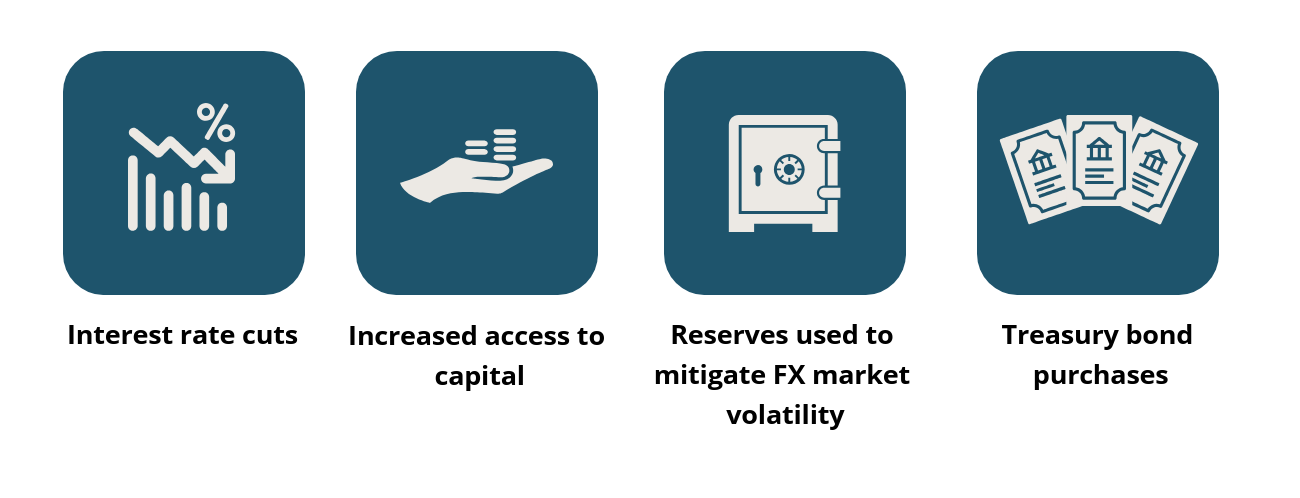COVID-19-related notifications
Collected together on this page are summaries of all of the Central Bank's press releases and notifications on responses to the COVID-19 pandemic, as well as links to the notifications themselves. Further actions taken by the Bank and announced on its website may be affected to some extend by COVID-19. The Central Bank first announced changes to its operations on 10 March 2020, and a press release on the Bank's first response measures was issued a day later.
The Central Bank of Iceland’s pandemic response measures
The Central Bank of Iceland’s principal objective is to promote price stability, financial stability, and sound and secure financial activities. The global COVID-19 pandemic and the public health measures imposed in order to curb the spread of the disease have had enormous economic repercussions. In response to this situation, the Central Bank has taken a wide range of actions, including lowering interest rates, boosting domestic financial institutions’ access to capital, using the international reserves to mitigate exchange rate volatility, and commencing secondary market purchases of Treasury bonds.

Show all
Why lower interest rates?
Why increase financial institutions’ access to capital?
Why use the international reserves to mitigate exchange rate volatility?
Why buy Treasury bonds?
